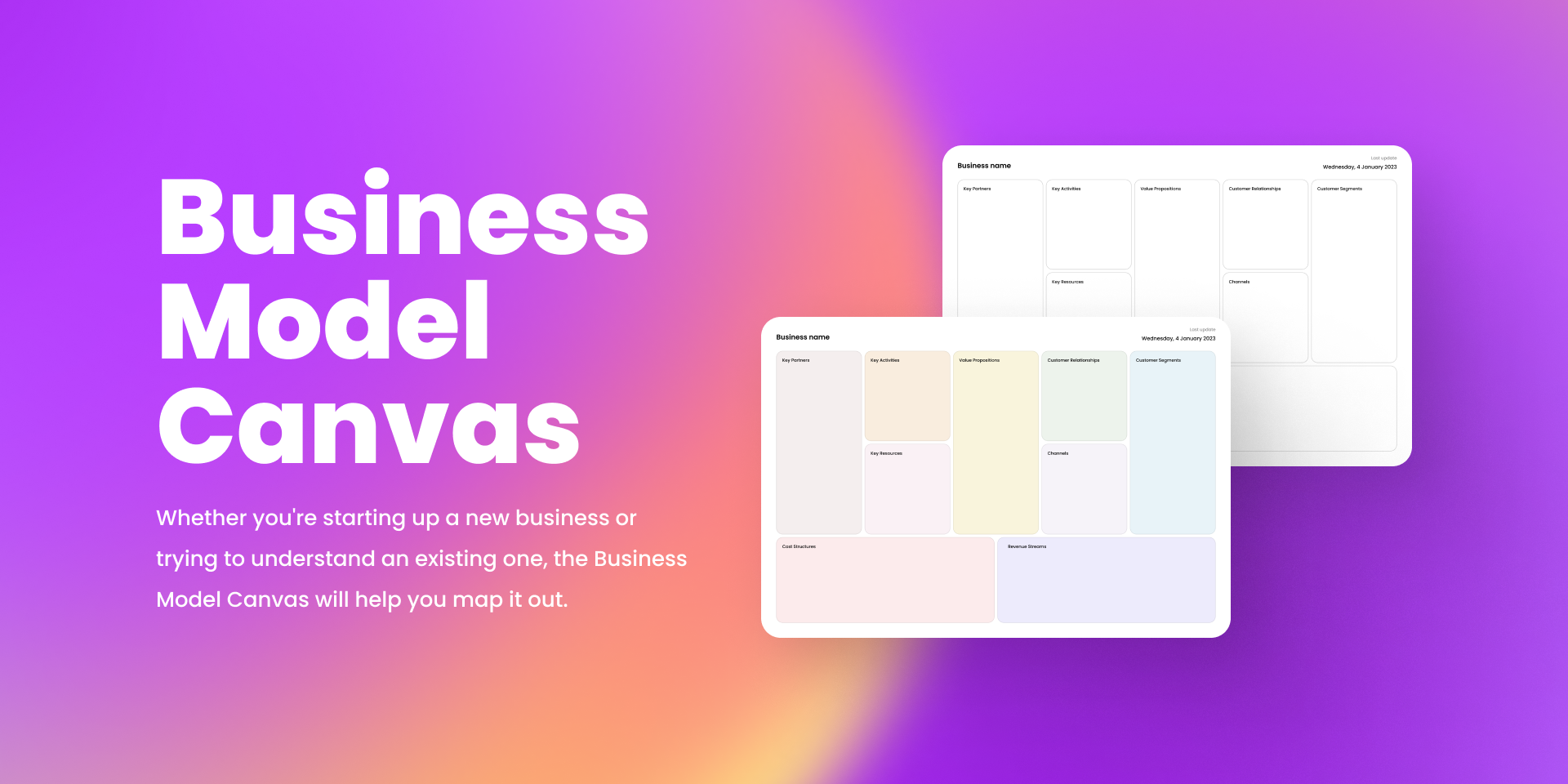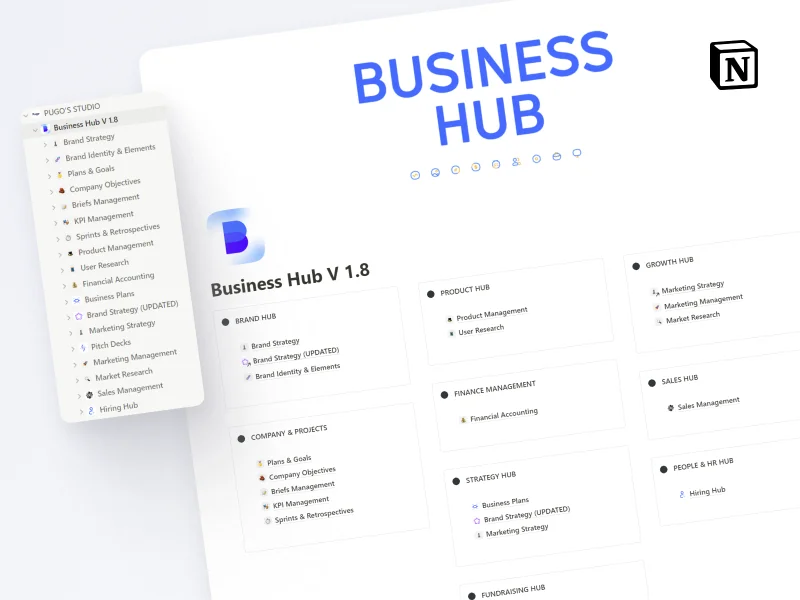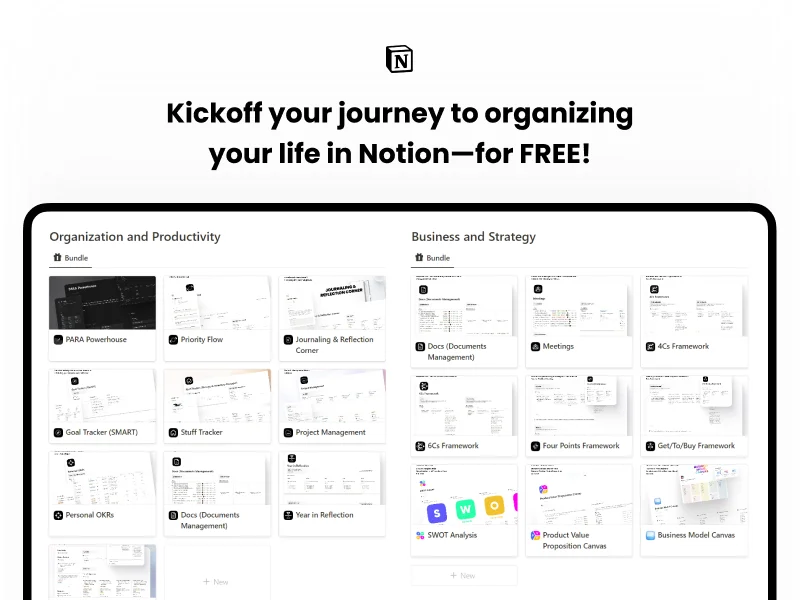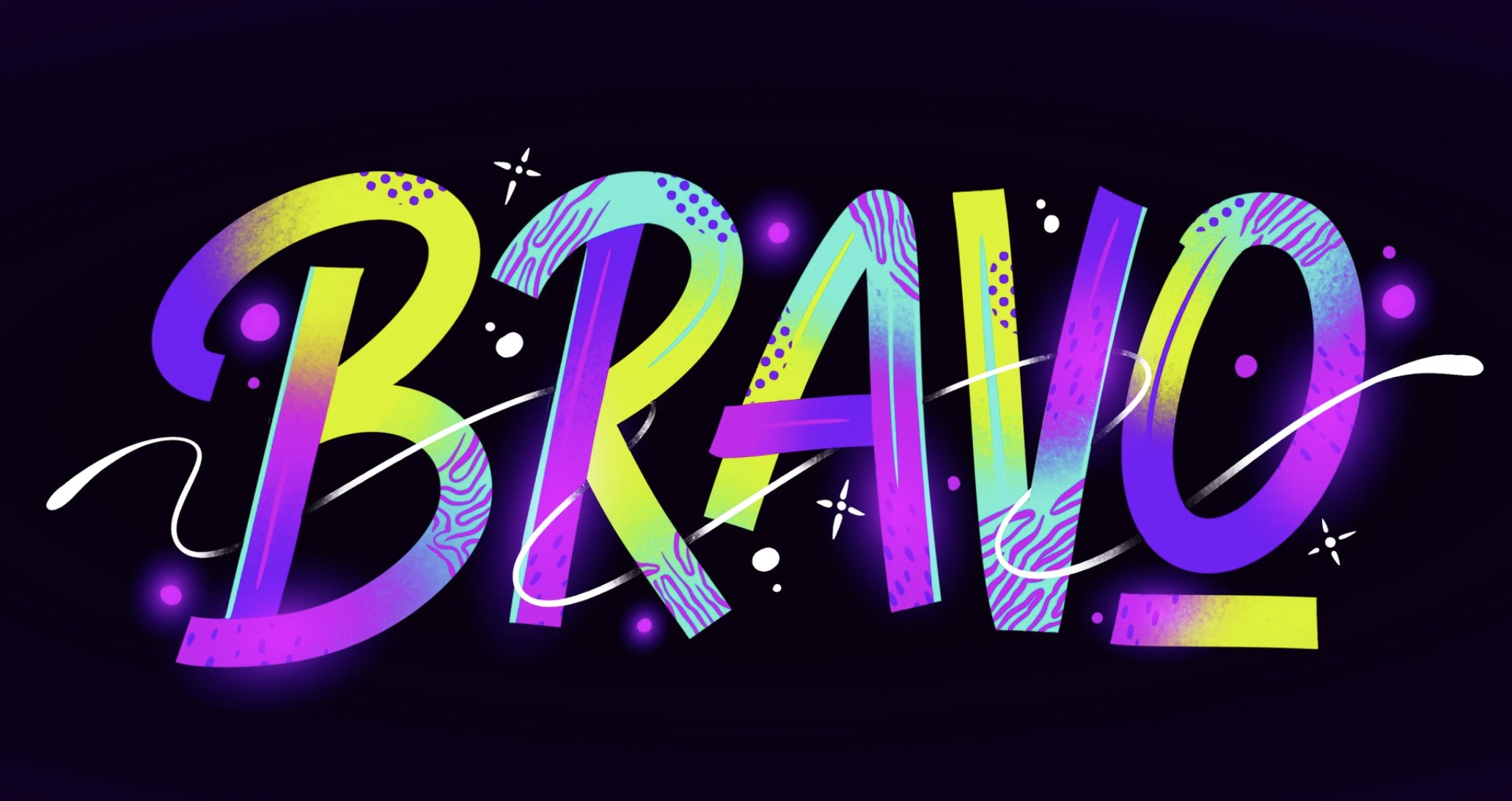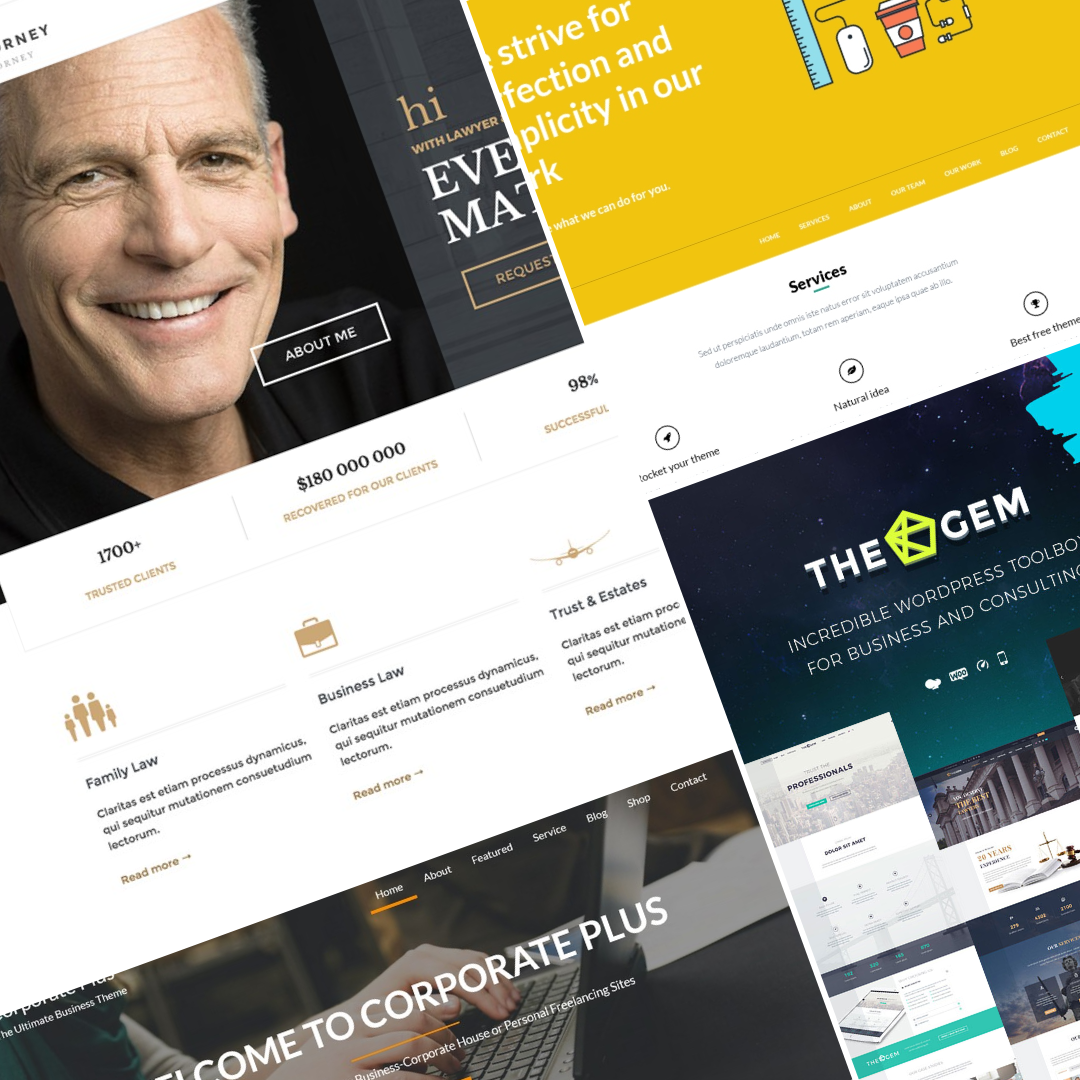In the dynamic world of business, having a clear and well-structured plan is essential for success. Entrepreneurs and startups often face the challenge of organizing their ideas and strategies in a coherent manner. This is where the Business Model Canvas (BMC) comes into play. In this blog post, we’ll explore what the Business Model Canvas is, its various applications, and how it can benefit startups in shaping their business vision. Let’s dive in!
Discover the power of the Business Model Canvas with our comprehensive guides, real-life examples, and free templates. Build a solid foundation for your business strategy and unlock new opportunities for success.
Business Model Canvas: An Overview
The Business Model Canvas is a strategic management tool developed by Alexander Osterwalder and Yves Pigneur. It provides a visual framework for entrepreneurs and business owners to describe, design, and analyze their business models. The canvas consists of nine essential building blocks, each representing a key aspect of the business.
What is Business Model Canvas Used For?
The Business Model Canvas is used to facilitate discussions, brainstorming sessions, and strategy development within a startup or an established business. Its visual format encourages collaboration and helps teams gain a holistic view of their business model. By focusing on key components, it allows businesses to refine their ideas and identify potential areas of improvement.
Business Model Canvas Template: A Practical Tool for Startups
Startups can benefit significantly from using a Business Model Canvas template. This tool simplifies the process of creating a business plan, ensuring that each aspect of the business is thoroughly examined.
1. Business Model Canvas Template for Notion
Unlock the full potential of your business with our comprehensive Business Model Canvas template for Notion. Designed to empower entrepreneurs, startups, and established businesses alike, this dynamic tool will revolutionize the way you plan, strategize, and innovate.
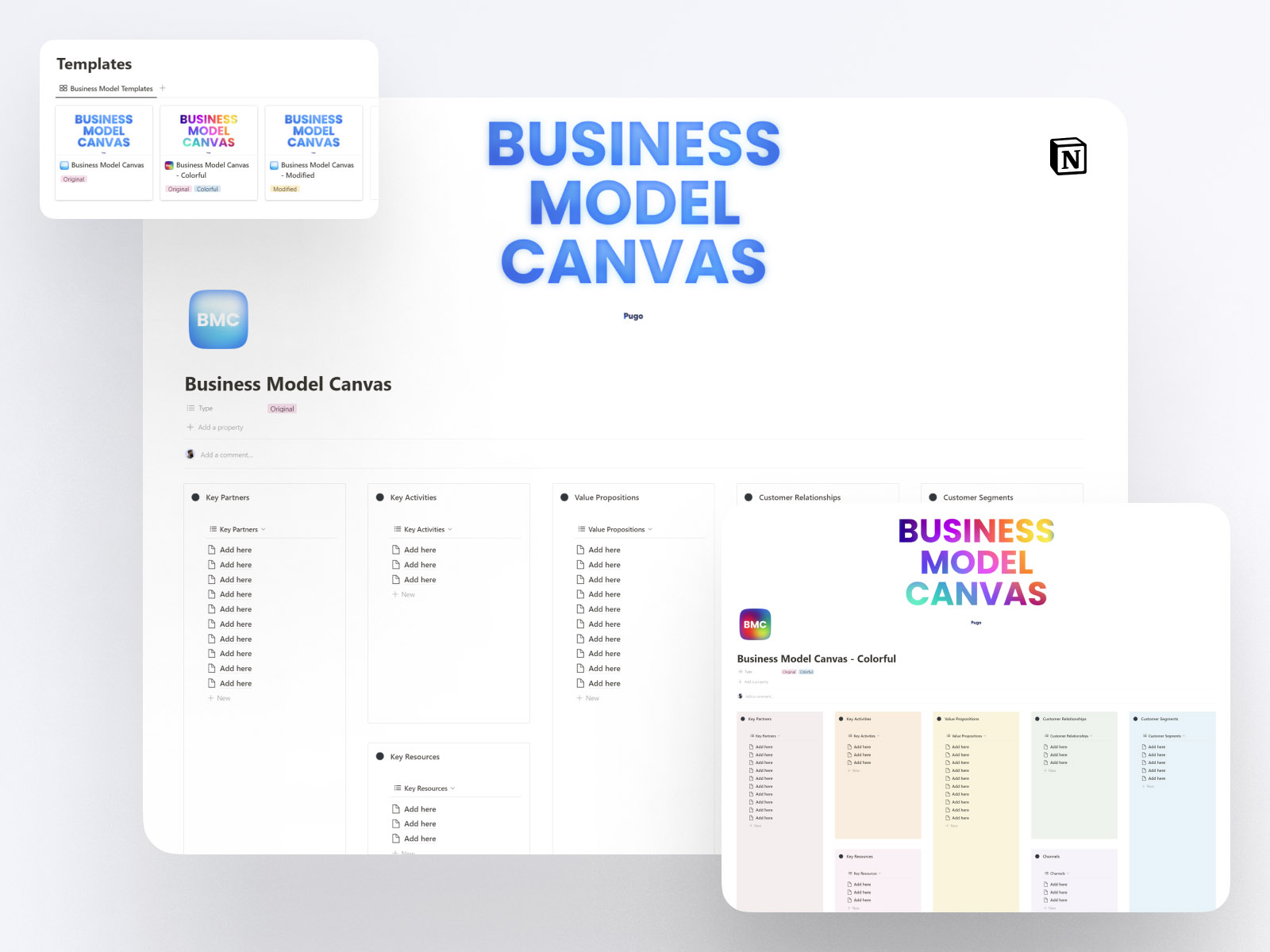
Don’t miss these Free and Paid Notion Templates to use for your business, startups and teams:
2. Business Model Canvas Template for Figma
Supercharge Your Business Strategy with the Figma Business Model Canvas Template
Are you ready to take your business strategy to the next level? Look no further than our powerful Figma Business Model Canvas Template. This cutting-edge tool is designed to help entrepreneurs, startups, and businesses of all sizes create, visualize, and refine their business models with ease.
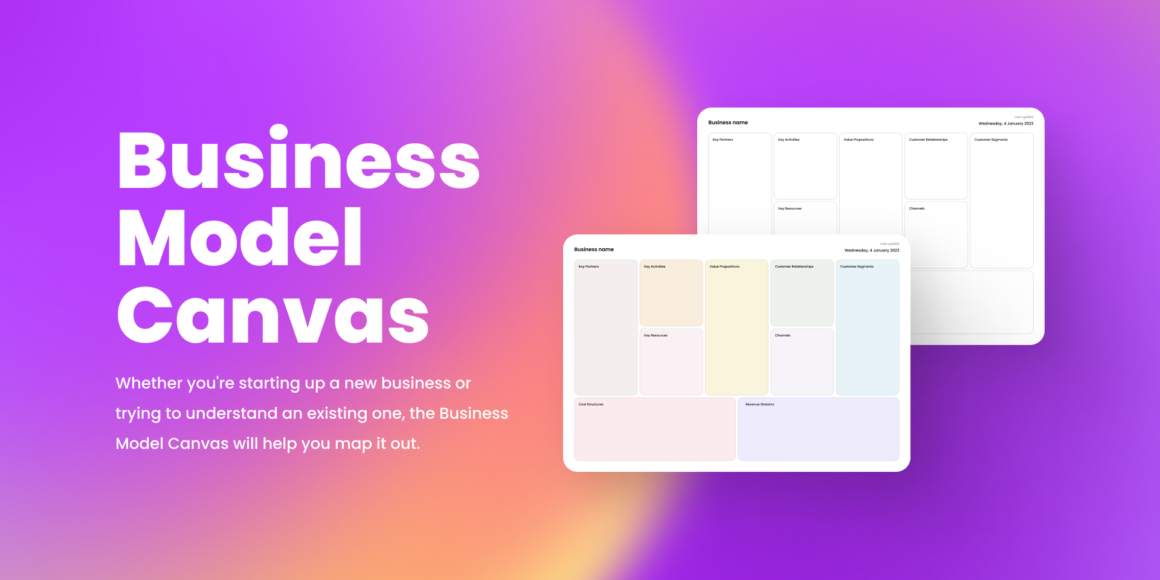
The 9-Step Business Model Canvas Explained: Building a Solid Foundation for Success
The Business Model Canvas is a powerful tool that empowers entrepreneurs and business owners to design, analyze, and refine their business models. This visual framework consists of nine crucial steps, each representing a key aspect of the business. Let’s delve into each step to understand how it contributes to the overall success of a business.
1. Customer Segments: Identifying Target Customers and Understanding Their Needs
The first step in creating a successful business model is understanding your target customers. By identifying specific customer segments and comprehending their needs, you can tailor your products or services to meet their demands effectively. Conduct market research and gather valuable insights to build a deep understanding of your target audience.
Example 1: Fitness Wearables – Identifying that fitness enthusiasts and health-conscious individuals are their target customers. They conduct market research to understand the specific needs of each segment, such as professional athletes who require advanced tracking features and casual users looking for user-friendly interfaces.
Example 2: Online Tutoring Platform – Recognizing that their target customers include students seeking academic support and professionals seeking skill enhancement. They conduct surveys to gain insights into the specific subjects or skills these customers are interested in.
2. Value Propositions: Defining the Unique Value That the Business Offers to Its Customers
Your value proposition is the foundation of your business model. It defines the unique benefits that your products or services provide to customers, setting you apart from competitors. A compelling value proposition resonates with your target audience and addresses their pain points, ensuring customer satisfaction and loyalty.
Example 1: Organic Skincare Brand – Defining their value proposition as offering all-natural, chemical-free products that promote healthy and glowing skin. This unique value sets them apart from competitors who may use synthetic ingredients.
Example 2: Mobile App for Time Management – Offering a value proposition of helping users effectively manage their time and boost productivity. Their app provides customizable features and personalized insights to address each user’s time management needs.
3. Channels: Determining How Products or Services Will Reach Customers
To bring your value proposition to your customers, you need well-defined channels. These channels represent the various touchpoints through which customers can access your offerings. Whether it’s through online platforms, physical stores, or direct sales, choosing the right channels is critical to reaching and engaging your target customers effectively.
Example 1: E-commerce Fashion Retailer – Utilizing both an online store and physical retail outlets to reach customers. Their online store provides a convenient shopping experience, while physical outlets allow customers to try on clothing before purchase.
Example 2: Food Delivery Service – Employing a mobile app and website to take orders from customers and coordinating with delivery partners to ensure timely delivery of meals.
4. Customer Relationships: Establishing the Type of Relationship the Business Wants to Build with Its Customers
Building strong customer relationships is essential for long-term success. Determine the type of relationship you want to establish with your customers, whether it’s personalized support, self-service options, or a community-based approach. Nurturing positive customer relationships enhances loyalty and drives repeat business.
Example 1: Software as a Service (SaaS) Company – Focusing on building strong customer relationships through dedicated customer support and personalized onboarding for new clients. They offer a help center, email support, and periodic check-ins to ensure customer satisfaction.
Example 2: Subscription-based Fitness Program – Nurturing customer relationships by providing personalized workout plans and nutrition advice. They encourage user feedback and implement updates based on customer suggestions.
5. Revenue Streams: Identifying Different Sources of Revenue for the Business
Understanding how your business will generate revenue is crucial for sustainability. Identify various revenue streams, such as product sales, subscriptions, licensing fees, or advertising revenue. Diversifying your revenue streams reduces dependency on a single source and strengthens your business model.
Example 1: Social Media Platform – Generating revenue through targeted advertising and sponsored content. They offer brands the opportunity to reach specific demographics based on user interests and engagement.
Example 2: Software Licensing Model – Earning revenue through monthly or annual subscriptions for their software. They also offer premium features to users who opt for higher-tier plans.
6. Key Resources: Recognizing the Essential Assets and Resources Required to Operate the Business
To deliver your value proposition effectively, you need key resources. These resources can be tangible assets like manufacturing facilities, technological infrastructure, or intangible resources like patents and intellectual property. Identifying and allocating resources efficiently is essential for smooth business operations.
Example 1: Manufacturing Company – Recognizing that state-of-the-art machinery and skilled workforce are essential resources for their production process. They invest in cutting-edge technology and training programs for their employees.
Example 2: Technology Startup – Identifying intellectual property, such as patents and software code, as their key resources. They safeguard their intellectual assets to maintain a competitive edge.
7. Key Activities: Defining the Core Activities That Drive the Business’s Success
Key activities represent the core processes and actions that your business must perform to deliver value to customers. These activities could include product development, marketing, supply chain management, customer support, or after-sales services. Aligning your key activities with your value proposition is critical for overall success.
Example 1: Restaurant Chain – Defining core activities like menu planning, sourcing high-quality ingredients, and maintaining consistent food quality across all locations.
Example 2: Digital Marketing Agency – Identifying key activities such as content creation, social media management, SEO optimization, and analyzing campaign performance.
8. Key Partnerships: Identifying External Stakeholders and Partners Crucial for the Business’s Operations
In today’s interconnected business landscape, collaborations and partnerships are valuable assets. Identify external stakeholders, suppliers, distributors, or strategic partners who can complement your offerings and enhance your business capabilities. Strong partnerships can help your business reach new markets and tap into additional resources.
Example 1: E-commerce Marketplace – Partnering with various suppliers and vendors to offer a wide range of products on their platform. They build strong relationships with these partners to ensure product availability and timely deliveries.
Example 2: Mobile App Development Company – Forming strategic partnerships with tech companies and cloud service providers to access cutting-edge technology and infrastructure for their app development projects.
9. Cost Structure: Analyzing the Fixed and Variable Costs Associated with Running the Business
Understanding your cost structure is vital for maintaining profitability. Analyze both fixed and variable costs associated with your business operations. Fixed costs, such as rent and salaries, remain consistent regardless of output, while variable costs fluctuate based on production or sales volume. Optimizing your cost structure ensures efficient resource allocation and sustainable growth.
Example 1: Healthcare Clinic – Analyzing fixed costs like rent, utilities, and salaries for medical staff. They also consider variable costs such as medical supplies and equipment maintenance.
Example 2: Online Streaming Platform – Examining fixed costs like licensing fees for content and server maintenance, along with variable costs associated with streaming bandwidth based on user demand.
9-Step Business Model Canvas Conclusion:
The 9-Step Business Model Canvas provides a comprehensive and systematic approach to crafting a successful business strategy. By meticulously examining each aspect, entrepreneurs can create a well-rounded business model that aligns with market demands and customer preferences. This strategic framework fosters innovation, adaptability, and customer-centricity, laying the groundwork for long-term success in a competitive business landscape. So, embrace the power of the Business Model Canvas, and embark on a journey of entrepreneurial triumph!
The Business Model Canvas provides a versatile and practical approach for entrepreneurs to create and refine their business strategies. By understanding and leveraging each step effectively, businesses can build a solid foundation for success, adapt to changing market dynamics, and deliver value to their target customers while ensuring profitability and sustainable growth.
Business Model Canvas Examples for Startups
To better understand how the Business Model Canvas works, let’s explore some real-world examples of startups that have leveraged this framework successfully:
1. Airbnb Business Model Example:
Redefining Travel Experiences
The popular accommodation platform identifies its customer segments (travelers and hosts) and defines its value proposition as offering unique lodging experiences. Their channels include an online marketplace and mobile app, while their revenue streams come from commissions on bookings.
As a leading accommodation platform, Airbnb thrives on understanding its diverse customer segments: travelers seeking unique lodging experiences and hosts looking to share their spaces. Its compelling value proposition lies in offering an unparalleled range of accommodations, from cozy apartments to exotic getaways, providing travelers with unforgettable stays and hosts with a source of income.
Utilizing an online marketplace and user-friendly mobile app as channels, Airbnb seamlessly connects travelers and hosts worldwide. Their revenue streams are derived from commissions on bookings, ensuring a win-win situation for all parties involved. With Airbnb, the journey becomes more than just a trip; it transforms into an unforgettable experience.
2. Spotify Business Model Example:
Elevating Music Streaming
The music streaming giant caters to a broad customer segment and provides an extensive music library as its value proposition. Its channels include a mobile app and desktop software, and revenue is generated through premium subscriptions and advertisements.
As the music streaming giant, Spotify caters to a vast and diverse customer segment, appealing to music enthusiasts worldwide. Its captivating value proposition revolves around providing access to an extensive music library, featuring millions of tracks from various genres, artists, and eras. Users can effortlessly find and enjoy their favorite tunes at their fingertips.
Spotify’s channels include a user-friendly mobile app and desktop software, ensuring a seamless music experience on any device. The company’s revenue streams are twofold: premium subscriptions offering ad-free listening, offline access, and enhanced features, and advertisements for free users. With Spotify, the world’s melodies converge into one harmonious stream, making music an integral part of people’s lives.
Wrapping up the Business Model Canvas:
The Business Model Canvas is a powerful tool that empowers startups to map out their business strategies effectively. Its visual approach and comprehensive framework provide clarity and enable entrepreneurs to make informed decisions. By analyzing each building block, startups can identify their strengths, weaknesses, and opportunities, leading to a more robust and sustainable business model.
So, if you’re a startup looking to enhance your business planning process, give the Business Model Canvas a try. Embrace this versatile tool, design your canvas, and embark on a journey of success in the dynamic world of entrepreneurship. Happy strategizing!
Remember that the Business Model Canvas is not a one-time exercise but an ongoing process to continuously improve and optimize your business strategy. Regularly revisiting your canvas and addressing new challenges will keep your business agile and resilient in a rapidly changing market.
FAQs
What is a business model?
A business model is a strategic framework that outlines how a company creates, delivers, and captures value. It describes the fundamental components and interactions that drive the organization’s revenue and profitability.
Why is a business model important for a company?
A business model serves as the foundation of a company’s strategy and operations. It helps align all aspects of the business, from product development to customer acquisition, ensuring a clear and coherent approach to achieve business goals.
What is the Business Model Canvas?
The Business Model Canvas is a visual tool designed by Alexander Osterwalder to help entrepreneurs and businesses articulate and analyze their business models. It consists of nine essential building blocks that represent key aspects of a business.
What are the nine components of the Business Model Canvas?
The nine components of the Business Model Canvas are Customer Segments, Value Propositions, Channels, Customer Relationships, Revenue Streams, Key Resources, Key Activities, Key Partnerships, and Cost Structure.
How can I use the Business Model Canvas for my startup?
The Business Model Canvas is an invaluable tool for startups to refine their business strategy, identify potential risks, and explore new opportunities. By filling out each canvas block, startups can gain a holistic understanding of their business model.
Can the Business Model Canvas be applied to established businesses too?
Absolutely! The Business Model Canvas is equally beneficial for established businesses seeking to innovate, adapt to changing markets, or explore new revenue streams. It provides a structured approach for evaluating and improving existing business models.
What are the benefits of using the Business Model Canvas?
Using the Business Model Canvas offers several benefits, including improved clarity of business strategy, enhanced decision-making, streamlined communication among team members, and a deeper understanding of customer needs.
Is the Business Model Canvas suitable for all industries?
Yes, the Business Model Canvas is a versatile tool that can be applied to businesses across industries. It is used by startups, tech companies, retail, service providers, and non-profit organizations to name a few.
How often should I update my Business Model Canvas?
Your Business Model Canvas should be regularly reviewed and updated, especially when significant changes occur in the market, customer preferences, or your business offerings. It is a dynamic tool that should reflect the evolving nature of your business.
Can I use digital tools to create and manage my Business Model Canvas?
Yes, there are several digital tools and software available that can help you create and manage your Business Model Canvas efficiently. Online platforms and applications allow for easy collaboration, version control, and real-time updates to keep your canvas up-to-date.

